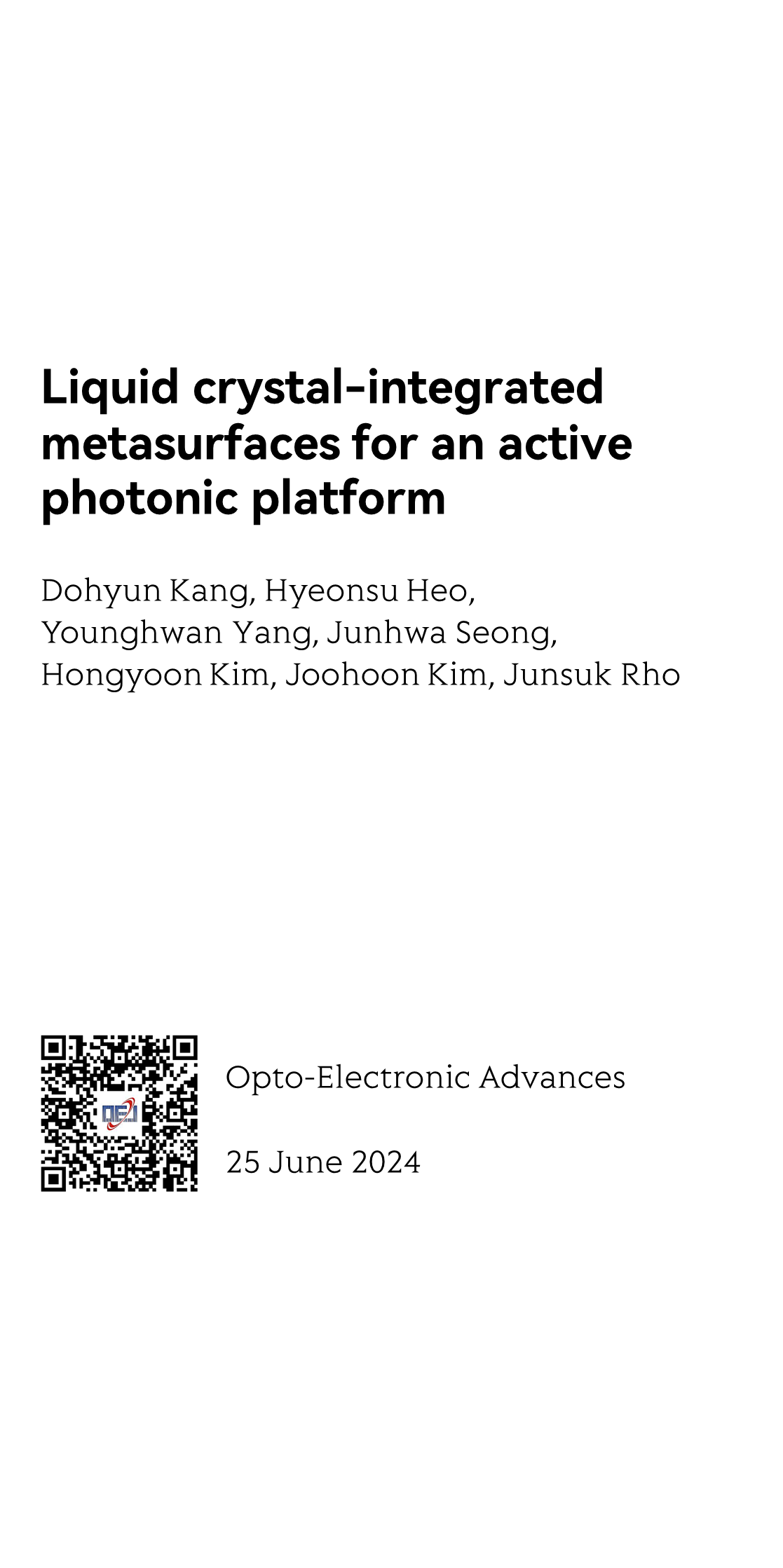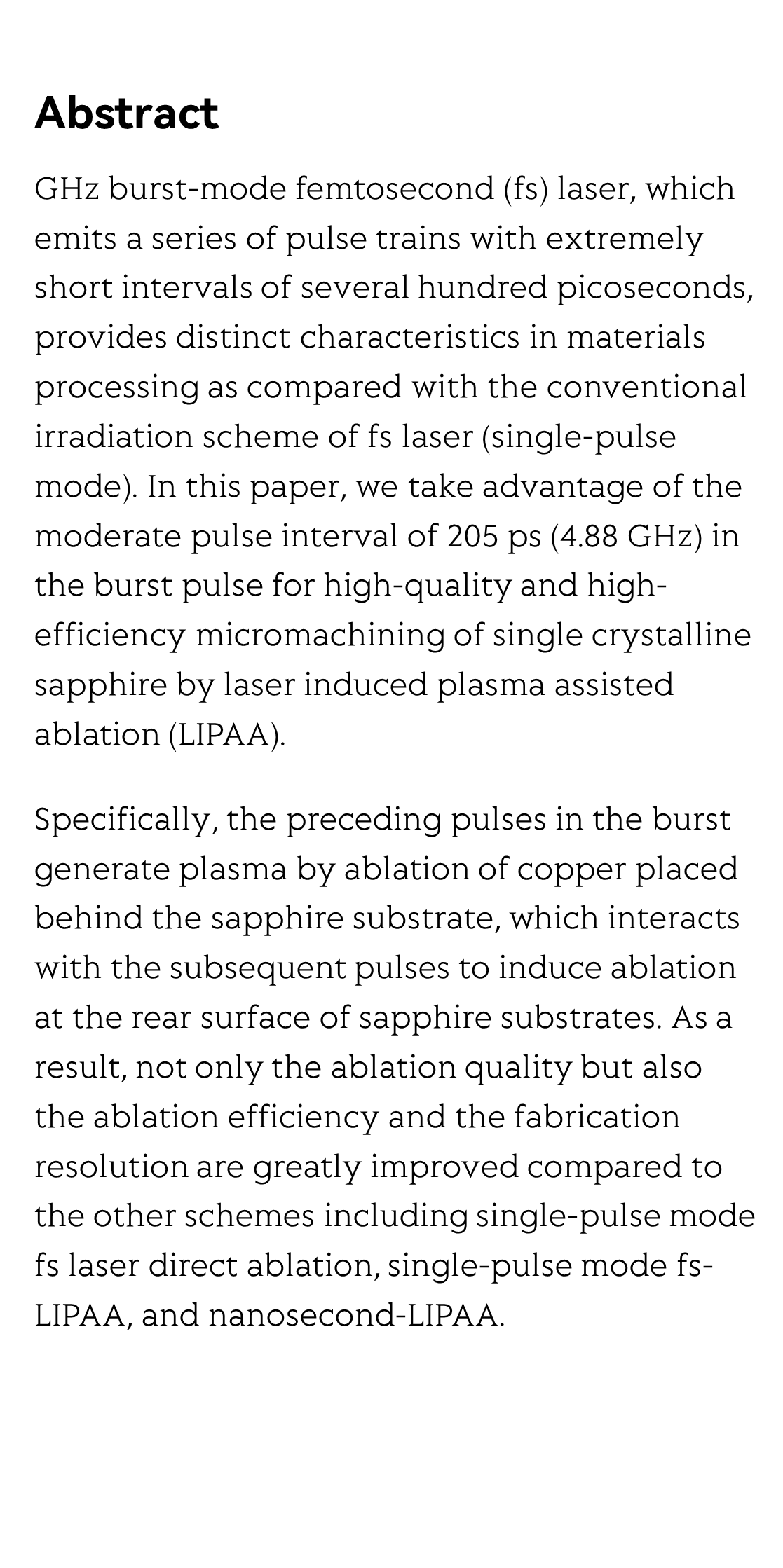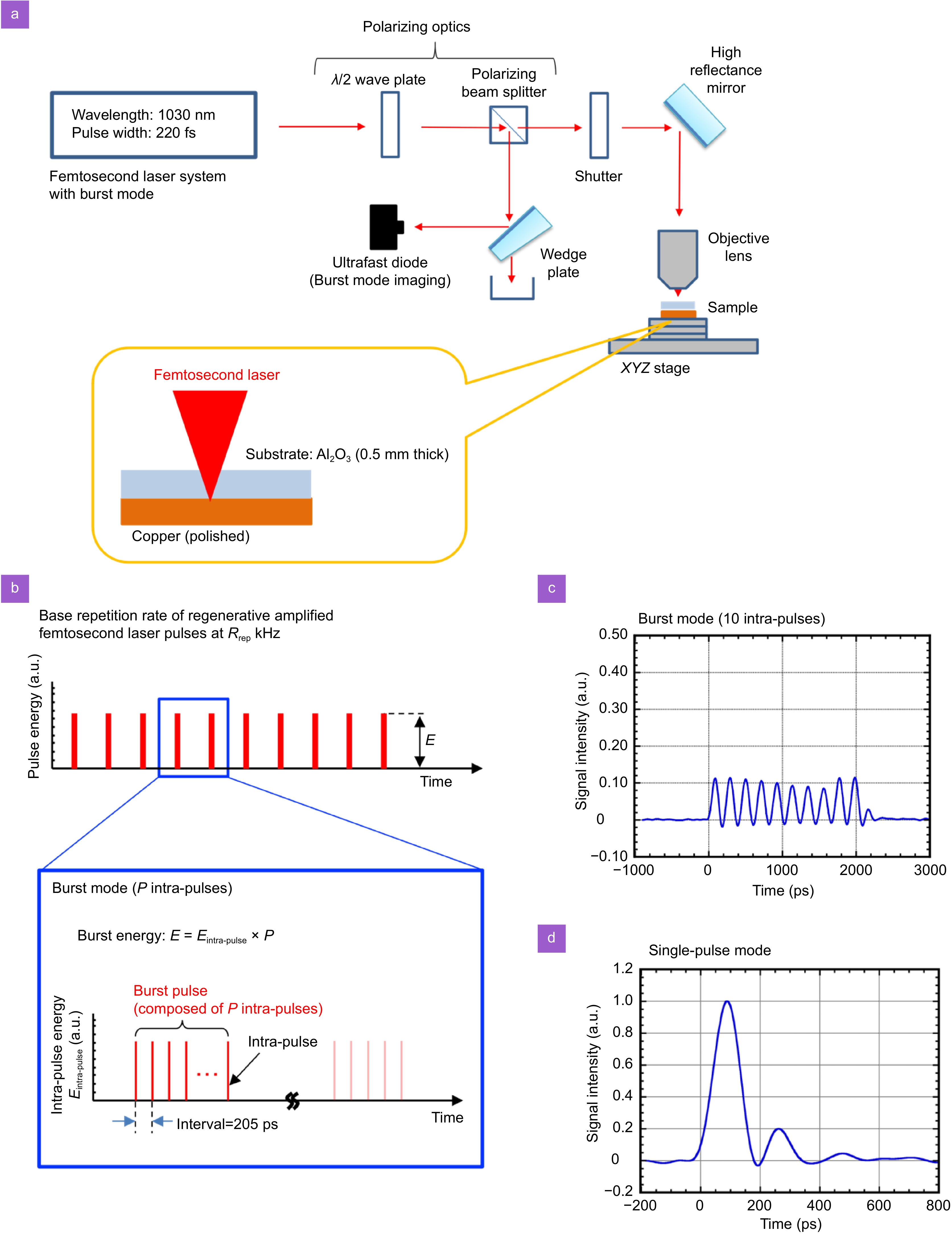(Peer-Reviewed) High performance micromachining of sapphire by laser induced plasma assisted ablation (LIPAA) using GHz burst mode femtosecond pulses
Kotaro Obata ¹, Shota Kawabata ¹ ², Yasutaka Hanada ¹ ³, Godai Miyaji ², Koji Sugioka ¹
¹ RIKEN Center for Advanced Photonics (RAP), Wako-shi, Saitama 351-0198, Japan
² Faculty of Engineering, Tokyo University of Agriculture and Technology, Koganei, Tokyo 184-8588, Japan
³ Graduate school of science and technology, Hirosaki University, Hirosaki, Aomori 036-8561, Japan
Opto-Electronic Science, 2024-06-24
Abstract
GHz burst-mode femtosecond (fs) laser, which emits a series of pulse trains with extremely short intervals of several hundred picoseconds, provides distinct characteristics in materials processing as compared with the conventional irradiation scheme of fs laser (single-pulse mode). In this paper, we take advantage of the moderate pulse interval of 205 ps (4.88 GHz) in the burst pulse for high-quality and high-efficiency micromachining of single crystalline sapphire by laser induced plasma assisted ablation (LIPAA).
Specifically, the preceding pulses in the burst generate plasma by ablation of copper placed behind the sapphire substrate, which interacts with the subsequent pulses to induce ablation at the rear surface of sapphire substrates. As a result, not only the ablation quality but also the ablation efficiency and the fabrication resolution are greatly improved compared to the other schemes including single-pulse mode fs laser direct ablation, single-pulse mode fs-LIPAA, and nanosecond-LIPAA.
Flicker minimization in power-saving displays enabled by measurement of difference in flexoelectric coefficients and displacement-current in positive dielectric anisotropy liquid crystals
Junho Jung, HaYoung Jung, GyuRi Choi, HanByeol Park, Sun-Mi Park, Ki-Sun Kwon, Heui-Seok Jin, Dong-Jin Lee, Hoon Jeong, JeongKi Park, Byeong Koo Kim, Seung Hee Lee, MinSu Kim
Opto-Electronic Advances
2025-09-25
Dual-frequency angular-multiplexed fringe projection profilometry with deep learning: breaking hardware limits for ultra-high-speed 3D imaging
Wenwu Chen, Yifan Liu, Shijie Feng, Wei Yin, Jiaming Qian, Yixuan Li, Hang Zhang, Maciej Trusiak, Malgorzata Kujawinska, Qian Chen, Chao Zuo
Opto-Electronic Advances
2025-09-25





